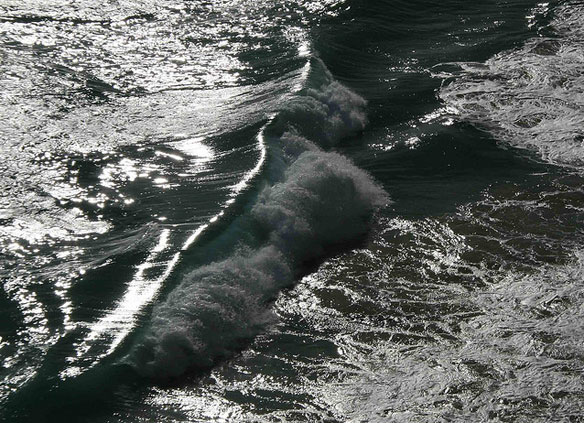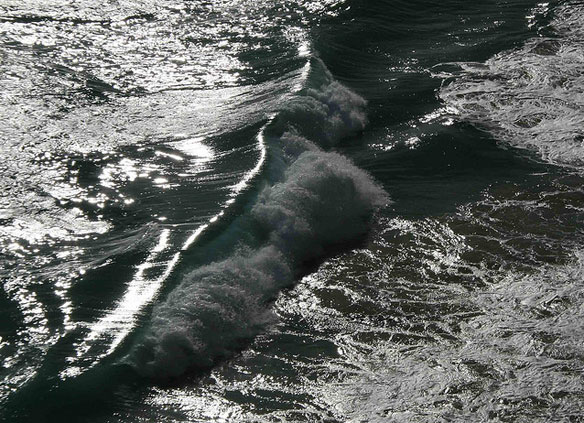
Photo source: ©© Tashland
Abstract; By Journal Of Integrated Coastal Management “Ondas assimétricas em praias com barra”
Natural beaches often present a breaker bar that significantly affect physical phenomena like, for example, wave transformation, wave reflexion, energy dissipation due to breaking and wave reforming into the trough region. These transformations are associated to nonlinear wave modifications.
In this work the oscillatory flow near the bottom of barred beaches is characterised. To achieve that purpose, the data obtained during two experiments were examined and processed: the data from a large-scale laboratory experiment carried out at the wave flume of the Polytechnic University of Catalonia (Barcelona, Spain) and the data from a nearshore field experiment, denoted by DUCK94, performed in a barrier island located in Duck (North Carolina, USA).
In the present analysis, we focus on the records provided by electromagnetic current meters placed near the bottom and at different cross-shore locations. The study undergoes through the identification of velocity and acceleration-skewnesses, which are recognised as forcing mechanisms capable to entrain and drive sediment transport. These characteristics are identified, and the cross-shore evolution of these parameters associated to wave propagation is assessed.
The results obtained for the two experiments are consonant, showing that nonlinear characteristics increase over the bar. In that region, one observes that velocity and acceleration-skewness coexist. This is evidenced through the study of the cross-shore evolution of some statistical moments and other simple parameters determined from the analysis of notable points in the velocity time series. The characteristics found in this work are important for sediment transport purposes, providing more insight about the effects that can cause sandbar migration and, thus, bed morphologic changes.









